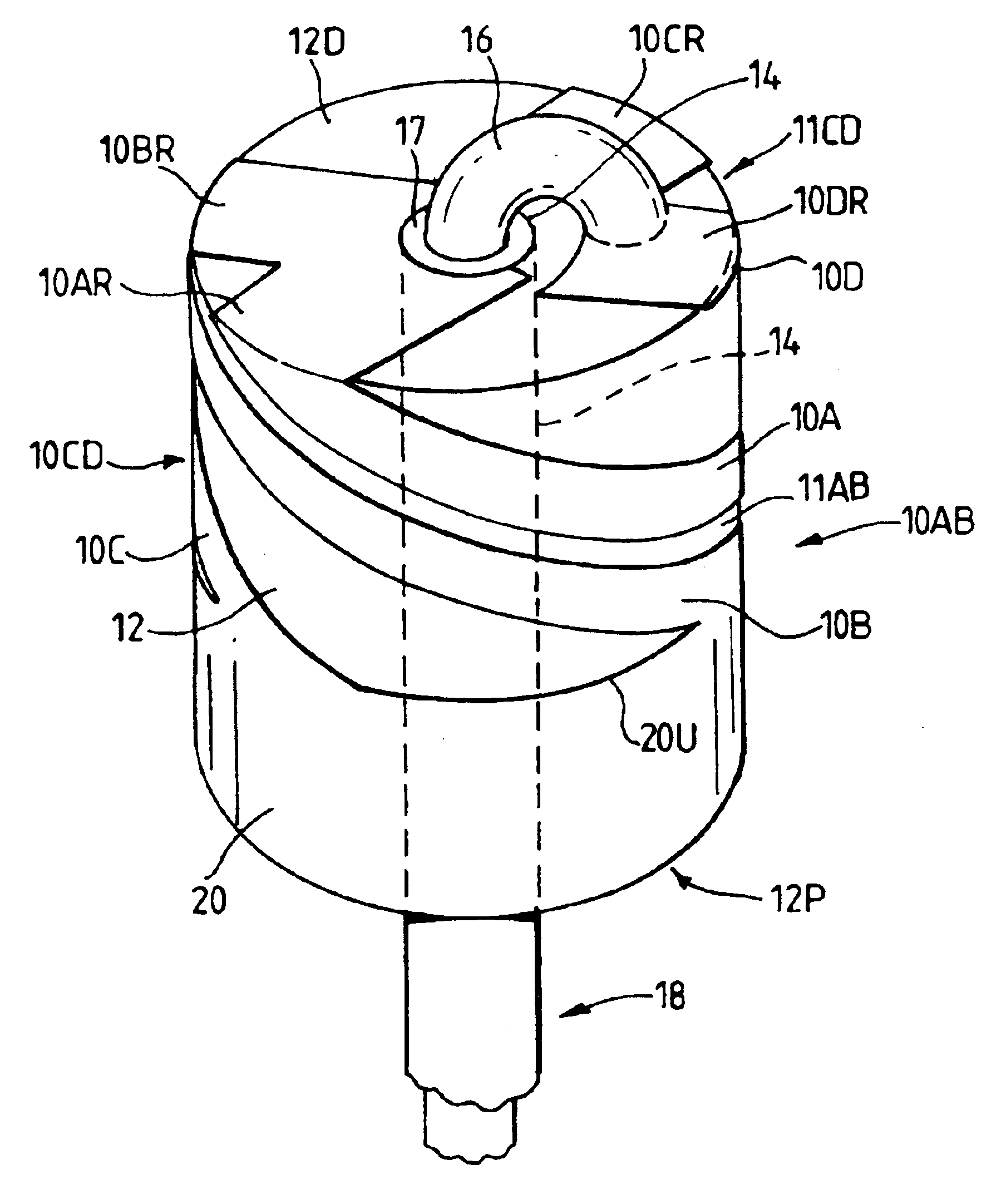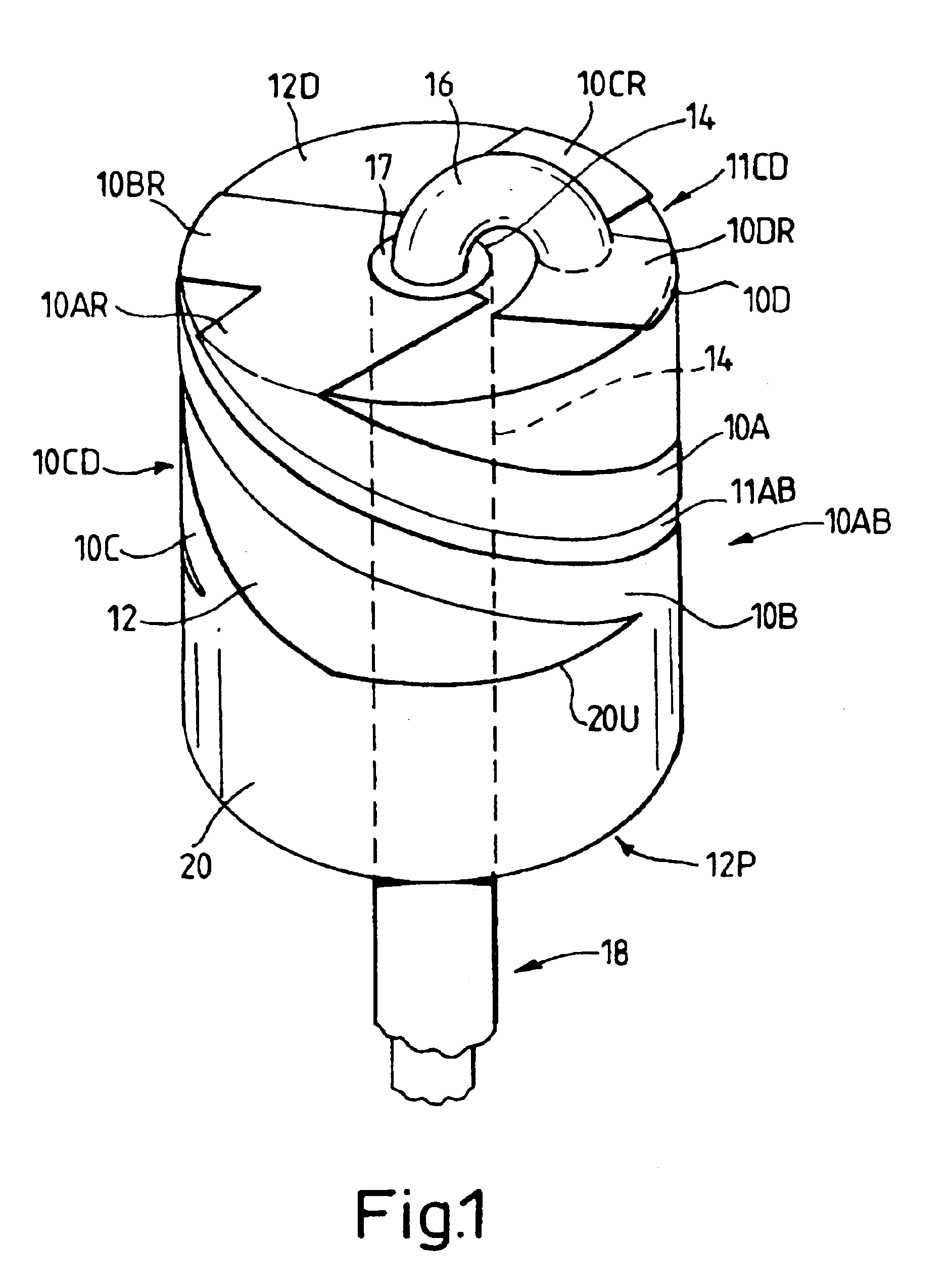Dielectrically-loaded antenna
a technology of dielectric loading and antennas, applied in the direction of antennas, non-resonant long antennas, radiating element structural forms, etc., can solve the problem of insufficient bandwidth for many applications
- Summary
- Abstract
- Description
- Claims
- Application Information
AI Technical Summary
Benefits of technology
Problems solved by technology
Method used
Image
Examples
Embodiment Construction
[0023]Referring to FIG. 1, an antenna of a construction similar to that shown in British Patent Application No. 2351850A has an antenna element structure comprising a pair of laterally opposed groups 10AB, 10CD of elongate radiating antenna elements 10AB, 10CD. The term “radiating” is used in this specification to describe antenna elements which, when the antenna is connected to a source of radio frequency energy, radiate energy into the space around the antenna. It will be understood that, in the context of an antenna for receiving radio frequency signals, the term “radiating elements” refers to elements which couple energy from the space surrounding the antenna to the conductors of the antenna for feeding to a receiver.
[0024]Each group of elements comprises, in this embodiment, two coextensive, mutually adjacent and generally parallel elongate antenna elements 10A, 10B, 10C, 10D which are disposed on the outer cylindrical surface of an antenna core 12 made of a ceramic dielectric ...
PUM
 Login to View More
Login to View More Abstract
Description
Claims
Application Information
 Login to View More
Login to View More - R&D
- Intellectual Property
- Life Sciences
- Materials
- Tech Scout
- Unparalleled Data Quality
- Higher Quality Content
- 60% Fewer Hallucinations
Browse by: Latest US Patents, China's latest patents, Technical Efficacy Thesaurus, Application Domain, Technology Topic, Popular Technical Reports.
© 2025 PatSnap. All rights reserved.Legal|Privacy policy|Modern Slavery Act Transparency Statement|Sitemap|About US| Contact US: help@patsnap.com



